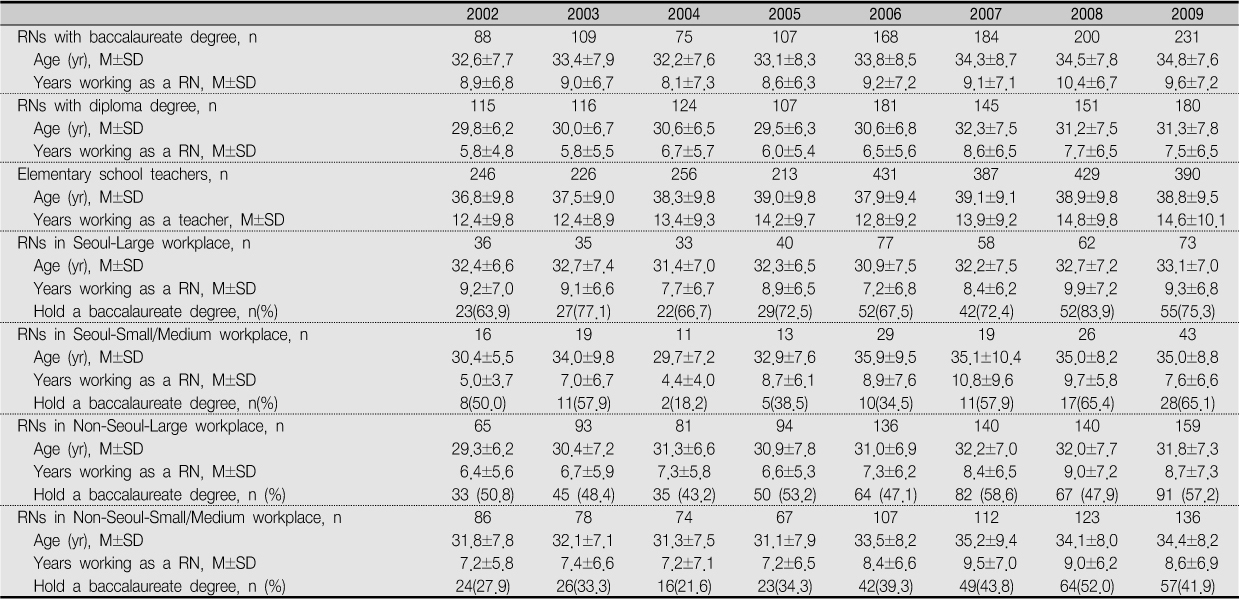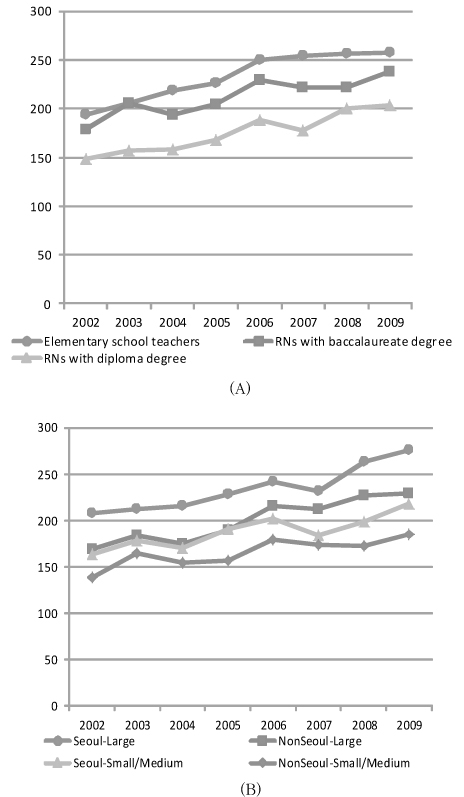1Department of Nursing, Kangwon National University, Korea.
2College of Nursing, Seoul National University, Korea.
Copyright © 2013 Korean Academy of Nursing Administration





Characteristics of Registered Nurses (RNs) and Elementary School Teachers by Education and Workplace (N=4,859)
Monthly Salary of Registered Nurses (RNs) and Elementary School Teachers by Education and Workplace (N=4,859; Unit=10,000 won)
Comparison of Changes in Monthly Salary of Registered Nurses (RNs) and Elementary School Teachers (N=4,775; unit=10,000 won)
*Interaction Effect of Year*Group F=13.11, p<.001
Comparison of Changes in Monthly Salary of Registered Nurses (RNs) by Workplace (N=2,232; unit=10,000 won)
*Interaction Effect of Year*Workplace F=5.40, p=.001
*Interaction Effect of Year*Group F=13.11,
*Interaction Effect of Year*Workplace F=5.40,

